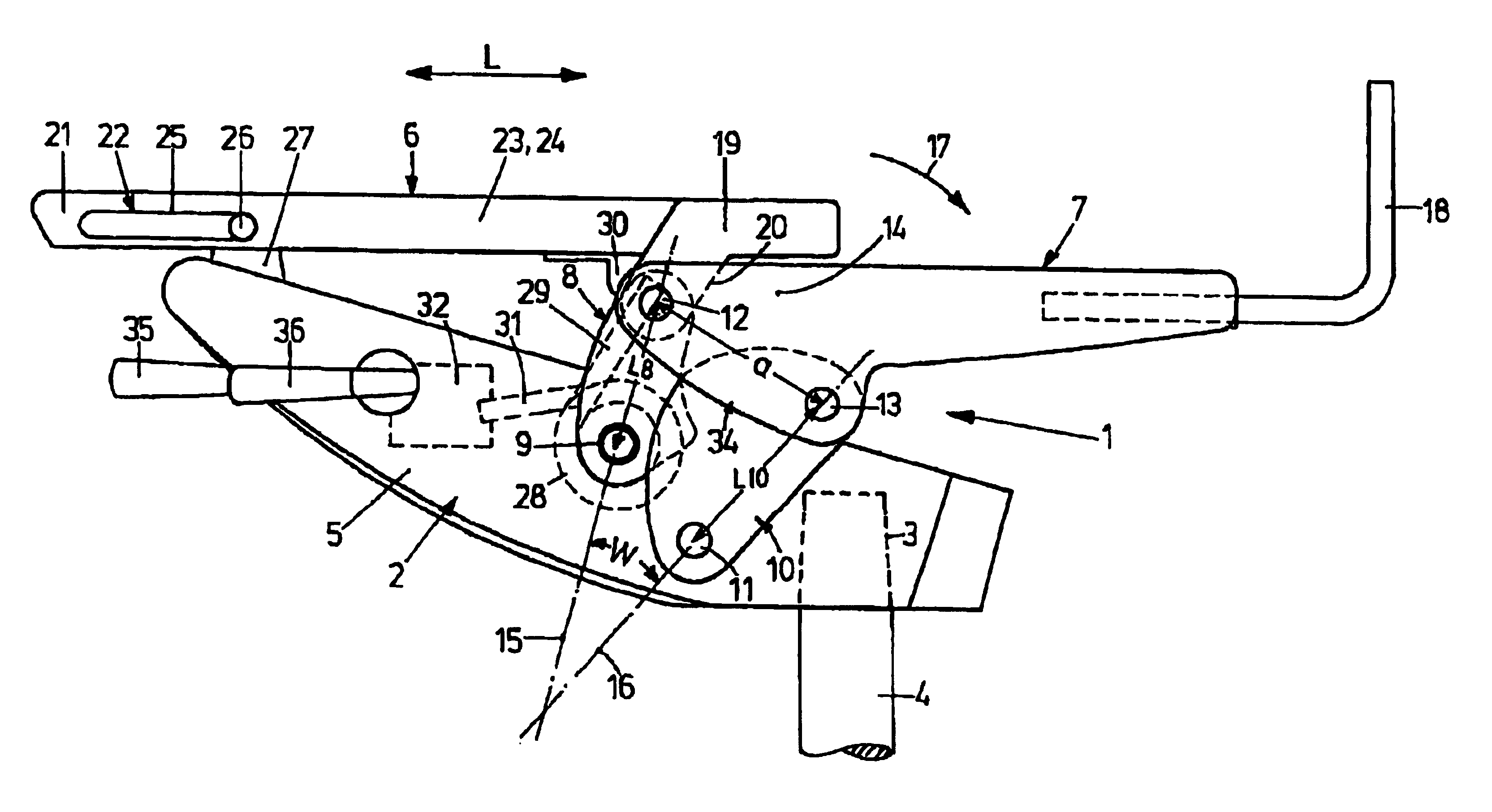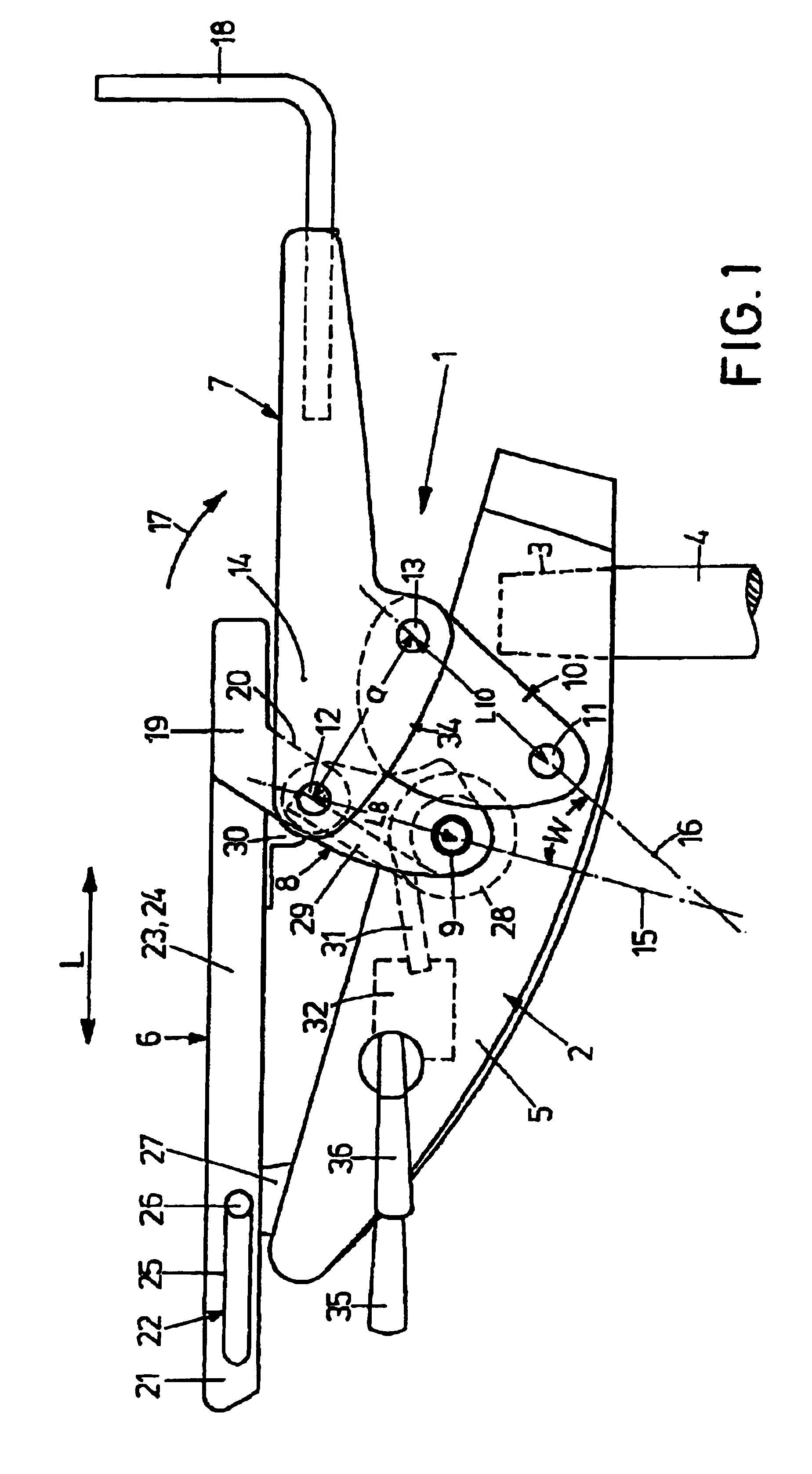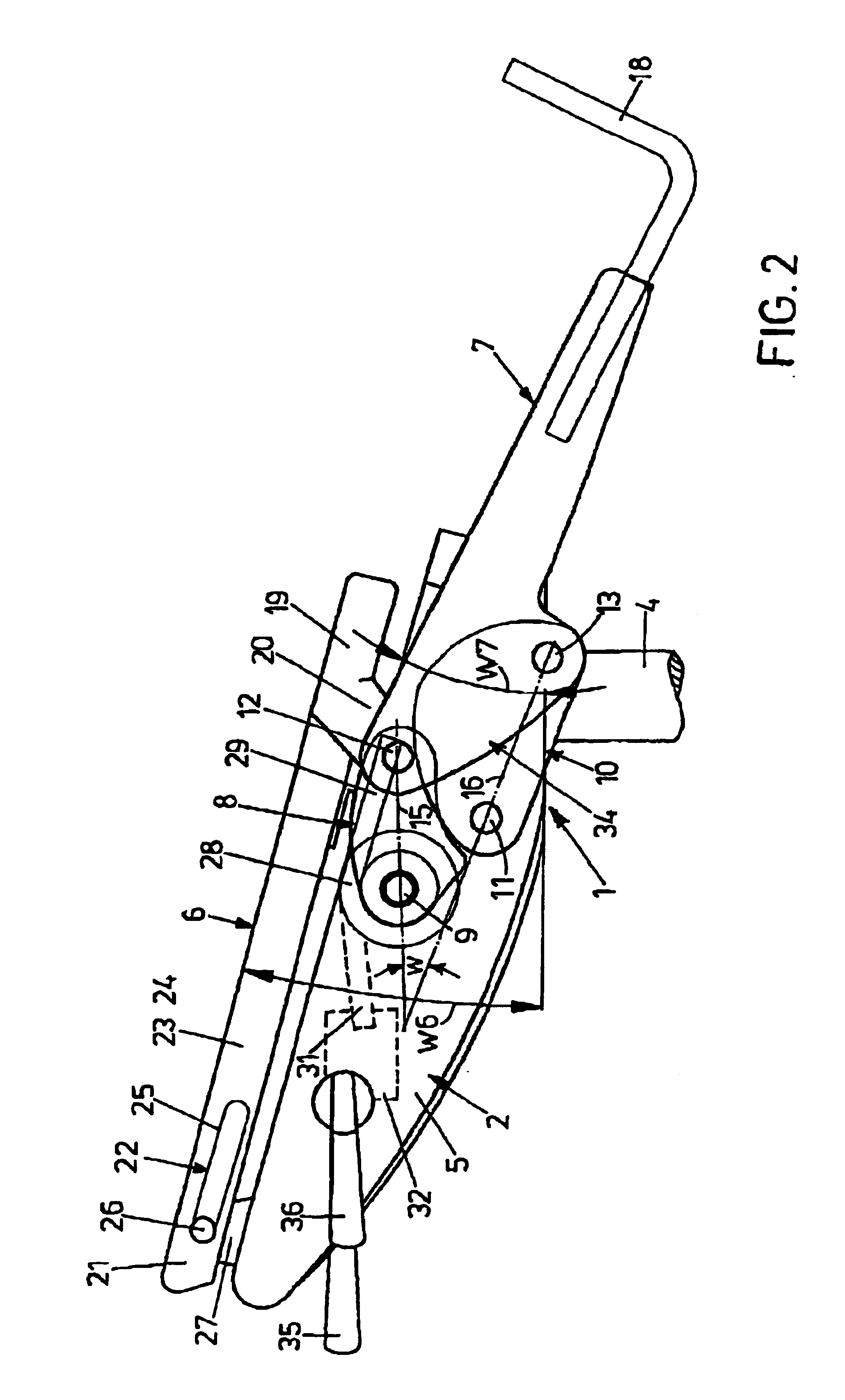Synchronizing mechanism for correlated seat/backrest motion of an office chair
- Summary
- Abstract
- Description
- Claims
- Application Information
AI Technical Summary
Benefits of technology
Problems solved by technology
Method used
Image
Examples
Embodiment Construction
[0023]The fundamental structure of the synchronizing mechanism, which is denoted by 1 in its entirety, will be explained in conjunction with FIGS. 1 and 3. It comprises a base carrier 2 that is placed on the upper end of a chair column 4 by means of a cone receptacle 3. Various constructional elements of the synchronizing mechanism 1 are outside and above the lateral cheeks 5 that run parallel to the longitudinal direction L of the chair. The core pieces thereof are a substantially frame-type seat carrier 6 and a backrest carrier 7 which is forked seen in a plan view. Mounted on the seat carrier 6 is the seat (not shown) with an upholstered seat panel. By way of an elbowed cross arm 18, the backrest carrier 7 holds a backrest (not shown) which is vertically adjustable in today's office chairs.
[0024]In terms of kinematics, the entire synchronizing mechanism 1 is designed in mirror symmetry to the longitudinal center plane M as seen in particular in FIG. 3. In this regard, the ensuing...
PUM
 Login to View More
Login to View More Abstract
Description
Claims
Application Information
 Login to View More
Login to View More - R&D
- Intellectual Property
- Life Sciences
- Materials
- Tech Scout
- Unparalleled Data Quality
- Higher Quality Content
- 60% Fewer Hallucinations
Browse by: Latest US Patents, China's latest patents, Technical Efficacy Thesaurus, Application Domain, Technology Topic, Popular Technical Reports.
© 2025 PatSnap. All rights reserved.Legal|Privacy policy|Modern Slavery Act Transparency Statement|Sitemap|About US| Contact US: help@patsnap.com



